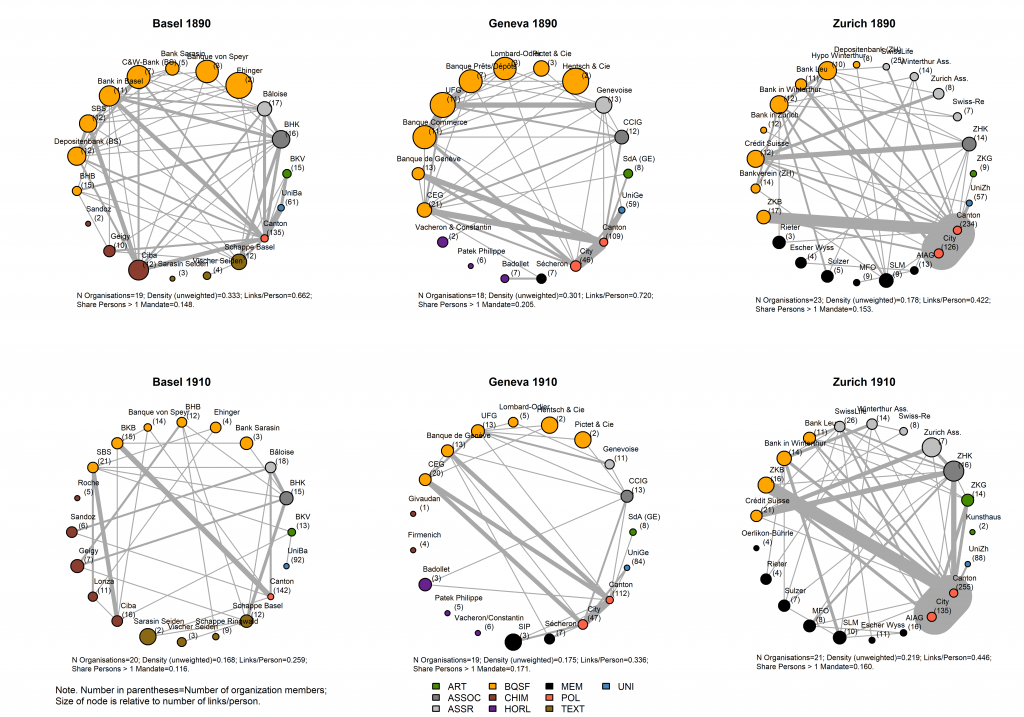Sinergia team members Michael Strebel, Baptiste Antoniazza, and André Mach have a new working paper on local elite networks and their most central actors. Recently, there has been a resurgence in prosopographical studies of (national) elites. In this paper, we complement this research with a long-term perspective on urban elites from different social spheres in three Swiss city-regions. City-regions are the main geographical hubs of power and the local level often serves as an entry point for accessing elite networks at larger scales. Assessing the evolution of local elite networks’ inclusiveness is thus crucial for our understanding of past and current inequalities and power structures. Using a positional approach, we identify academic, cultural, economic and political elites in Basel, Geneva, and Zurich from 1890 to 2020. In our analysis, we first assess elites’ multi-positionality in city-regional organizations. We observe a gradual disintegration of local elite networks over the course of the 20th century and their almost complete disappearance to the present day. In a second step, we present the profiles of the core elite, i.e. the 400 actors that hold positions in two social spheres at the same time. Old Swiss men form a rather cohesive and exclusive core elite throughout the period and descendants of patrician families dominate Basel and Geneva’s (but not Zurich’s) local networks until the beginning of the 20th century. These results have implications for our understanding of the functioning of local economies and for our conception of the local level as an entry point for newcomers to elite positions.
→ Paper
